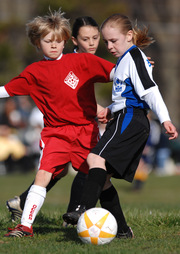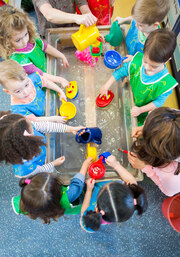Blooming Buddies: The Benefits of Flower Arranging Workshops for Children with Special Needs
Caring for a child with special needs can be challenging. It can be emotionally and physically taxing- and definitely requires professional guidance. However, adding fun and engaging activities to your routine can make a significant difference.
Specifically, flower arranging can be an interactive and beneficial activity both for you and your physically or mentally-challenged kid. This creative outlet promotes focus, fine motor skills, and sensory stimulation. Furthermore, it allows you both to bond together in a relaxed and joyful environment.
This post covers the benefits that a kid with special needs can gain from flower-arranging workshops.
Benefits of Flower Arranging Workshops for Children with Special Needs
Besides home-based flower arranging sessions, attending flower arranging workshops together offers the added benefit of socializing with others, fostering a sense of community and shared enjoyment in your child’s learning experiences.
Here are a few ways flower arranging workshops can be beneficial for kids with special needs.
1. Enhancing Fine Motor Skills
Perhaps just like swimming lessons, scavenger hunts, or obstacle courses, flower arranging workshops can enable children to improve their motor skills. Grasping stems, positioning petals, and securing blooms in place, the activity specifically allows them to practice hand-eye coordination and dexterity.
Moreover, these incremental improvements can positively impact a child’s ability to perform daily tasks with more ease and independence.
2. Sensory Stimulation
Working with different types of flowers exposes children to a range of textures, colors, and scents. For what it’s worth, even ‘digital flowers’ have a way of stimulating one’s senses before delivery or receipt.
For instance, the Bouqs’ tulip collection offers a vibrant array of hues and subtle fragrances that engage the senses, enriching children’s sensory experiences. Furthermore, this stimulation helps increase their awareness and appreciation of their surroundings, nurturing their curiosity about the world around them.
3. Creative Expression

Flower arranging allows space for self-expression and imagination without any pressure for perfection. Children with special needs can explore different arrangements suited to their preferences, fostering a sense of pride in their creations.
This creative outlet also supports emotional well-being specifically for these children, providing a calming and therapeutic activity they can turn to when facing challenging moments in life.
4. Social Opportunities
Attending workshops opens doors for social interaction between families facing similar challenges. This connection not only benefits the child but also provides support and networking opportunities among caregivers.
5. Building Confidence
As children progress in their flower arranging skills, they experience the satisfaction and accomplishment of mastering new techniques. This sense of achievement helps boost their self-esteem and confidence as they tackle other aspects of life.
Special Needs in Children Where Flower Arranging Can Help
Children with various physical, cognitive, and emotional special needs can benefit from flower arranging workshops. For those with autism spectrum disorder (ASD), for example, these activities provide an avenue for refining motor skills, while the sensory exploration can be calming and regulating.
Similarly, children with cerebral palsy may improve their dexterity by handling delicate petals and balancing flower stems.
Kids facing emotional challenges or developmental delays can also find value in flower arranging workshops. The relaxed atmosphere facilitates self-expression and creativity which boosts confidence and reduces stress.
As we’ve seen, flower arranging workshops present an incredible opportunity for children with special needs to learn, grow, and express themselves creatively. These workshops not only foster the development of vital skills but also create a supportive and inclusive environment that enhances the emotional well-being of both children and caregivers.
What to get your child insterested in the joys of nature? Read about these 5 fall adventures for sensory sensitive children.





 Ava Roman (she/her) is the Managing Editor of
Ava Roman (she/her) is the Managing Editor of

